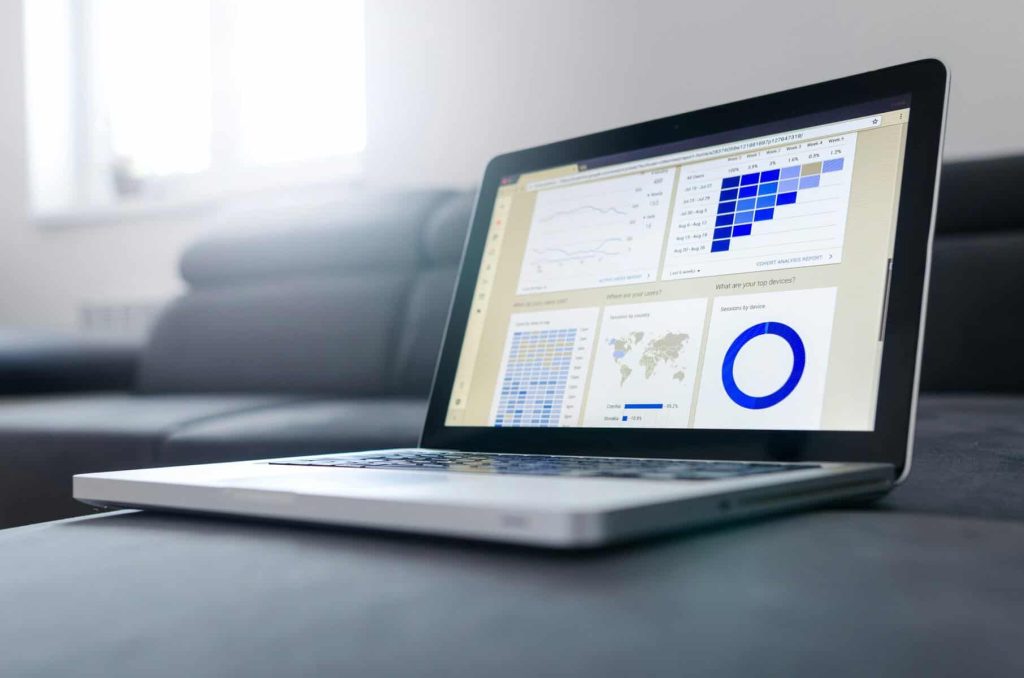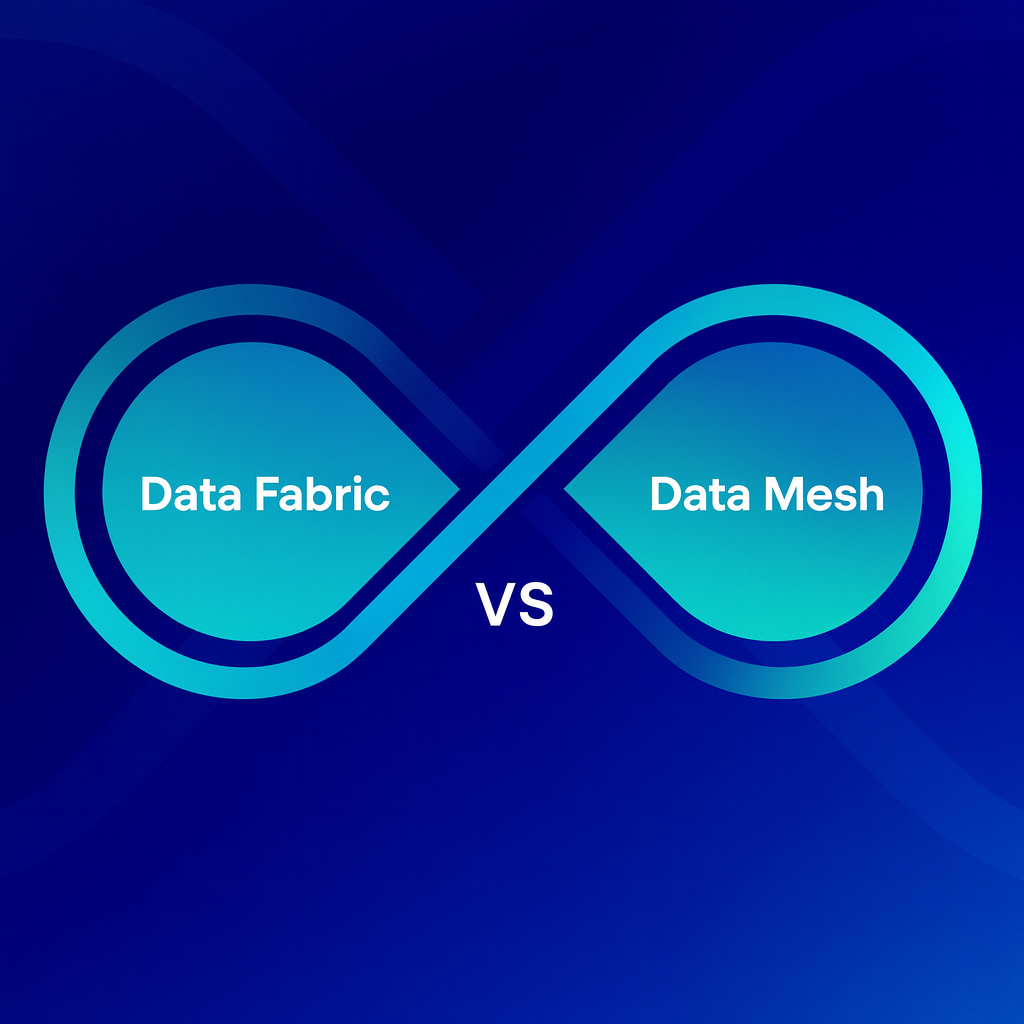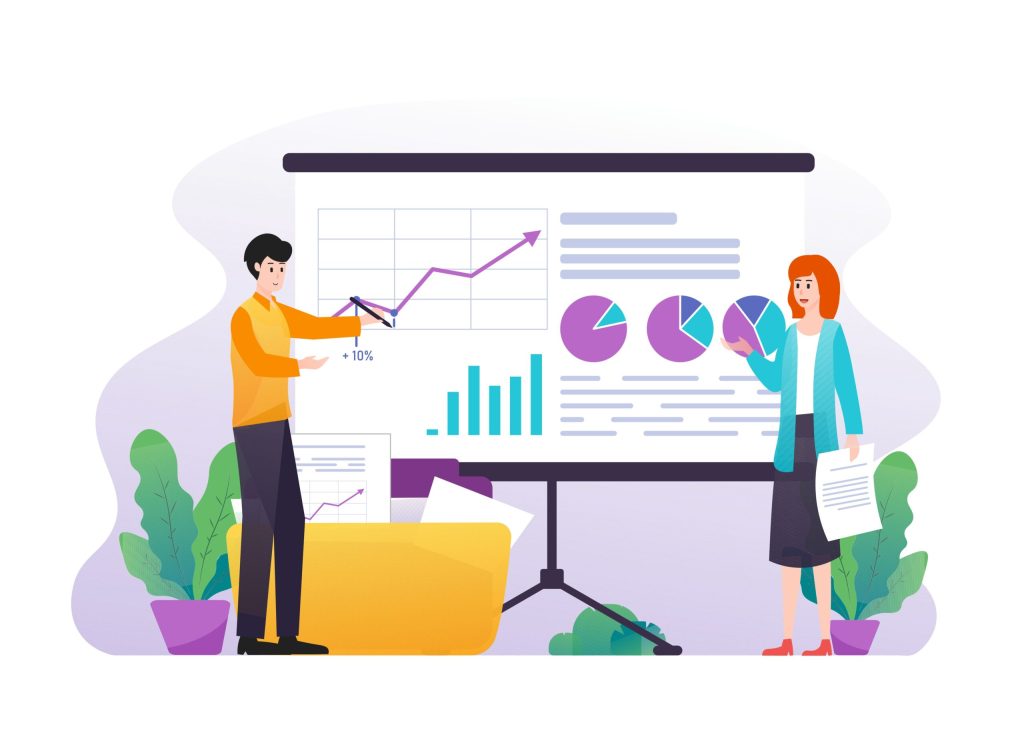Table of Contents
In business today, it’s not just about having data—it’s about knowing what to do with it. That’s where AI in analytics is changing the game. Instead of relying on outdated reports or gut instincts, companies are now tapping into real-time insights powered by artificial intelligence. From spotting trends to predicting outcomes, AI in analytics helps businesses make smarter, faster decisions that actually move the needle.
For years, business analytics revolved around backward-looking dashboards and spreadsheets. But with today’s volume and speed of data, that’s no longer enough. AI in analytics is helping companies leap from slow, reactive decisions to forward-looking strategies—and it’s completely reshaping the way teams operate.
? What Is AI in Analytics?
At its core, AI in analytics involves using artificial intelligence and machine learning tools to analyze data and extract insights that would be hard or impossible to detect manually. It’s not just about automating reports—it’s about enabling systems to learn from data, detect anomalies, and offer predictions in real time.
Whether it’s understanding customer behavior, forecasting future sales, or optimizing logistics, AI in analytics gives you a serious edge in today’s competitive landscape.
How AI in Analytics Is Changing Business Decision-Making
Let’s break down the key ways that AI in analytics is transforming how decisions are made across industries:
1. Faster, Smarter Decisions
Traditional analytics required manual data collection and static reporting. With AI in analytics, businesses can process vast amounts of data instantly and provide recommendations in real time.
No more waiting days for monthly reports
Systems highlight risks and opportunities as they arise
AI automates next-step suggestions based on current trends

2. Predictive Analytics Made Easy
One of the most impactful areas of AI in analytics is predictive analytics. Instead of looking backward, AI forecasts future outcomes—sales, churn, market shifts, and more.
Imagine knowing when a customer might leave—or when sales will spike—before it happens.
That’s not fantasy anymore. With machine learning tools, these predictions become part of your everyday workflow.
3. Better Customer Understanding
AI can analyze unstructured data—like customer reviews, chat logs, or social media—to surface valuable insights. You can uncover:
Sentiment trends
Product feedback themes
Market opportunities
AI helps you listen to your customers even when they’re not directly talking to you.
4. Enhanced Personalization
AI in analytics enables companies to tailor experiences for individual users:
E-commerce platforms recommend the right product
Streaming services personalize your watchlist
Marketers segment and target users more accurately
This kind of hyper-personalization boosts engagement and conversions—powered entirely by smart data.
Real-World Examples of AI in Analytics
Here’s how businesses across industries are already leveraging AI in analytics:
Healthcare
Hospitals use predictive models to:
Anticipate patient readmission
Optimize treatment plans
Improve diagnostics using image analysis
Retail
Retailers leverage AI in analytics to:
Recommend products
Personalize email marketing
Predict demand and optimize stock
Want to see how smart dashboards can make a difference? Visit our article on building actionable dashboards to learn more.
Finance
Financial institutions apply AI in analytics to:
Detect fraud
Recommend investment strategies
Automate credit scoring
For more insights on how AI powers actionable dashboards in various sectors, check out our Actionable Dashboards blog post.
B2B SaaS
SaaS companies use AI to:
Improve customer retention
Forecast MRR (monthly recurring revenue)
Optimize onboarding flows
Check out how Engine Analytics supports SaaS teams with scalable analytics solutions.
Logistics & Supply Chain
AI helps logistics teams:
Predict delivery delays
Optimize routes in real time
Monitor supply risks before they happen

Top Machine Learning Tools Powering This Shift
Behind every powerful AI system is a set of tools that make the magic happen. Here are some popular machine learning tools used in analytics:
Google Vertex AI – Great for building predictive models at scale
DataRobot – Enables no-code AI for business users
Amazon SageMaker – Powerful for large, custom AI workflows
Power BI with Azure ML – Integrates predictive models into dashboards
Many of these tools are also designed for collaboration, making it easier for analysts and executives to work from the same source of truth.
One example: According to MIT Sloan Management Review, companies using machine learning in analytics saw a 4X increase in forecast accuracy over those that didn’t.
AI in Analytics vs. Traditional Analytics
Here’s a side-by-side look:
| Feature | Traditional Analytics | AI in Analytics |
|---|---|---|
| Approach | Descriptive (What happened?) | Predictive & Prescriptive (What will happen? What should we do?) |
| Speed | Batch processing | Real-time analysis |
| Flexibility | Static reports | Dynamic, self-learning systems |
| Personalization | Basic segmentation | Hyper-personalized recommendations |
| Human Input | High | Lower (AI assists or automates tasks) |
Benefits of Using AI in Analytics
Still wondering whether it’s worth investing in AI in analytics? Here’s a breakdown of what you gain:
? Faster Decision Cycles
Decisions that once took days now happen in minutes with AI-driven data alerts.
? Increased Accuracy
AI reduces human error by spotting patterns we might miss. That leads to more accurate forecasts and fewer surprises.
? Scalable Insights
As your data grows, so does the AI’s capacity to learn and improve. No more bottlenecks as your business scales.
? Cost Savings
AI uncovers inefficiencies you didn’t know existed—whether it’s overspending on ads, underpricing a product, or missing high-value customers.
Getting Started with AI in Analytics
Starting with AI in analytics doesn’t mean overhauling your entire system. Here’s how to begin smart:
1. Audit Your Current Data
Do you have access to quality, centralized data? If not, start with cleanup and integration.
2. Identify Key Use Cases
Which areas would benefit most—sales forecasting, customer churn, or supply chain optimization?
3. Choose the Right Tools
Pick tools that align with your team’s technical level. For many, no-code solutions are a great entry point.
4. Start Small, Then Scale
Pilot your AI strategy in one department, track results, and expand based on learnings.
AI, Analytics, and the Future of Business
Let’s be clear—AI in analytics isn’t just a trend. It’s a fundamental shift in how companies compete, grow, and serve customers. As AI tools become more accessible, the businesses that embrace them will outpace those that don’t.
Even small companies are starting to see the value. For example, one growing online retailer saw a 22% revenue increase within 90 days of implementing predictive analytics. That wasn’t from spending more—it was from using existing data more intelligently.
And with solutions like Engine Analytics, even mid-sized teams can access this kind of technology without a team of engineers.
Conclusion: It’s Time to Act on Smarter Data
AI in analytics is changing the way businesses make decisions—from boardrooms to marketing departments to customer support. It’s not about replacing humans; it’s about empowering them with better tools, faster data, and smarter strategies.
Ready to turn your data into a competitive advantage?
? Visit Engine Analytics to explore how our team can help you build AI-powered analytics solutions tailored to your goals.
Here’s Some Interesting FAQs for You
What’s the difference between AI in analytics and regular analytics?
Regular analytics helps you understand what happened in the past—like reporting on sales, traffic, or churn. It’s mostly descriptive and reactive.
AI in analytics goes a step further. It predicts what’s likely to happen next and recommends actions to improve results. Instead of just seeing that sales dropped last month, AI tells you why—and what to do next. It’s proactive, intelligent, and built for fast-moving decisions.
Is it expensive to use AI in analytics?
Not anymore. AI used to be a luxury reserved for big enterprises. Today, many machine learning tools are affordable and offer scalable pricing.
Whether you’re a small business or a growing startup, you can start small with AI-powered platforms—many of which are cloud-based and require minimal setup. The ROI often outweighs the initial cost, especially as your data and decisions improve.
Can non-technical teams use AI-powered analytics?
Yes! You no longer need to be a data scientist to benefit from AI in analytics.
Many tools are designed with non-technical users in mind. With drag-and-drop interfaces, no-code workflows, and built-in templates, marketing teams, operations managers, and even executives can explore data, generate insights, and make smart decisions—all without writing a single line of code.
Regular analytics helps you understand what happened in the past—like reporting on sales, traffic, or churn. It’s mostly descriptive and reactive.
AI in analytics goes a step further. It predicts what’s likely to happen next and recommends actions to improve results. Instead of just seeing that sales dropped last month, AI tells you why—and what to do next. It’s proactive, intelligent, and built for fast-moving decisions.
Not anymore. AI used to be a luxury reserved for big enterprises. Today, many machine learning tools are affordable and offer scalable pricing.
Whether you’re a small business or a growing startup, you can start small with AI-powered platforms—many of which are cloud-based and require minimal setup. The ROI often outweighs the initial cost, especially as your data and decisions improve.
Yes! You no longer need to be a data scientist to benefit from AI in analytics.
Many tools are designed with non-technical users in mind. With drag-and-drop interfaces, no-code workflows, and built-in templates, marketing teams, operations managers, and even executives can explore data, generate insights, and make smart decisions—all without writing a single line of code.








